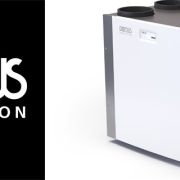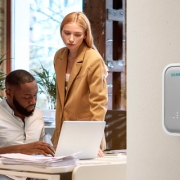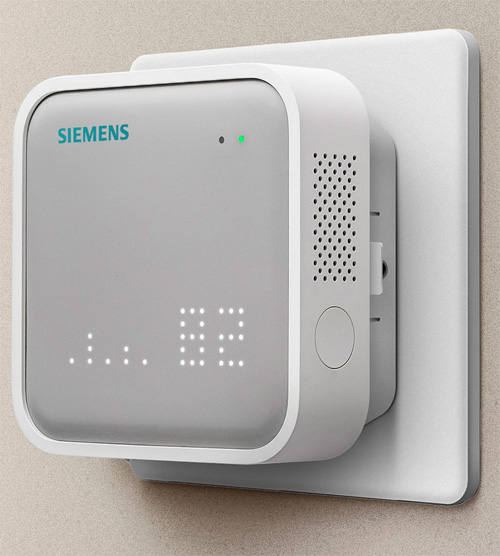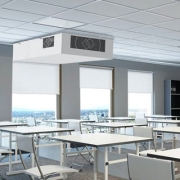Domus Ventilation, manufacturer of market-leading ventilation systems that save energy and improve indoor air quality, has expanded its HRXE range of Mechanical Ventilation with Heat Recovery (MVHR) units with the launch of HRXE-ZEUS. HRXE-ZEUS has been introduced to meet ventilation requirements for large residential properties, which require a more powerful system to deliver the airflow required to meet Building Regulations Part F.
HRXE-ZEUS high performance MVHR system combines supply and extract ventilation in one system. Using an advanced heat exchanger, up to 95% of the heat typically lost in waste, stale air is efficiently recovered and used to temper the fresh air drawn into the building. The filtered, pre-warmed air is distributed to areas of the home such as living rooms and bedrooms, effectively meeting part of the heating load in energy efficient dwellings. The system features two independent fans which have full-speed control for background and boost ventilation rates.
HRXE-ZEUS comes with 100% thermal bypass which automatically activates when the air temperature reaches a pre-set level, allowing in cooler, fresh, filtered air without warming it through the heat exchanger – ideal for increasingly air tight properties that are prone to overheating in summer. The smart design of HRXE-ZEUS means there is no reduction in airflow when operating in bypass mode.
There are four HRXE-ZEUS models to choose from, available to meet different specifications and different on-site requirements, including opposite handed units and units with integral humidistat. Optimal ventilation performance is achieved when choosing models with the latter, as the sensors accurately measure air humidity and the HRXE-ZEUS’s extract speed automatically changes from background to boost as the level of humidity increases.
HRXE-ZEUS accessories include an Anti-Vibration tray which isolates the unit from the wall to reduce any low levels of vibration induced noise, condensation drain kit and, of course, replacement filters. The filters are easily replaced via the front access panel, for quick and easy maintenance.
HRXE-ZEUS joins Domus Ventilation’s existing range of MVHR systems, including HRXE-HERA which is suited to use in smaller properties of up to two/three bedrooms, and HRXE-AURA designed for homes of up to four/five bedrooms. All units are listed on the SAP Product Characteristics Database (PCDB) and come with a warranty of five years, with the first year covering parts and labour.
The HRXE range has been designed to work most efficiently when used with Domus duct systems, providing a total solution to whole house ventilation solutions for residential properties. Domus duct systems offer improved system performance through the exacting tolerances and engineered fit of the system, whereby pressure drops are minimised and air leakage virtually eliminated. Domus duct systems feature a range of unique products, including the award-winning Greenline Bend which reduces duct bend resistance by up to 60%.
Domus Ventilation has a well-deserved reputation for quality, supported by excellent technical support, from a market leading manufacturer and designer. It is well placed to offer immediate, practical solutions to Building Regulations Parts F & L.
For further information on the Domus Ventilation HRXE-Zues and MVHR appliances, CLICK HERE to email Domus Ventilation
OR HERE to visit the Domus Website







 The unit assists building owners and operators in meeting a range of environmental building regulations and certification requirements including WELL, RESET, LBC, FITWEL and LEED.
The unit assists building owners and operators in meeting a range of environmental building regulations and certification requirements including WELL, RESET, LBC, FITWEL and LEED.
